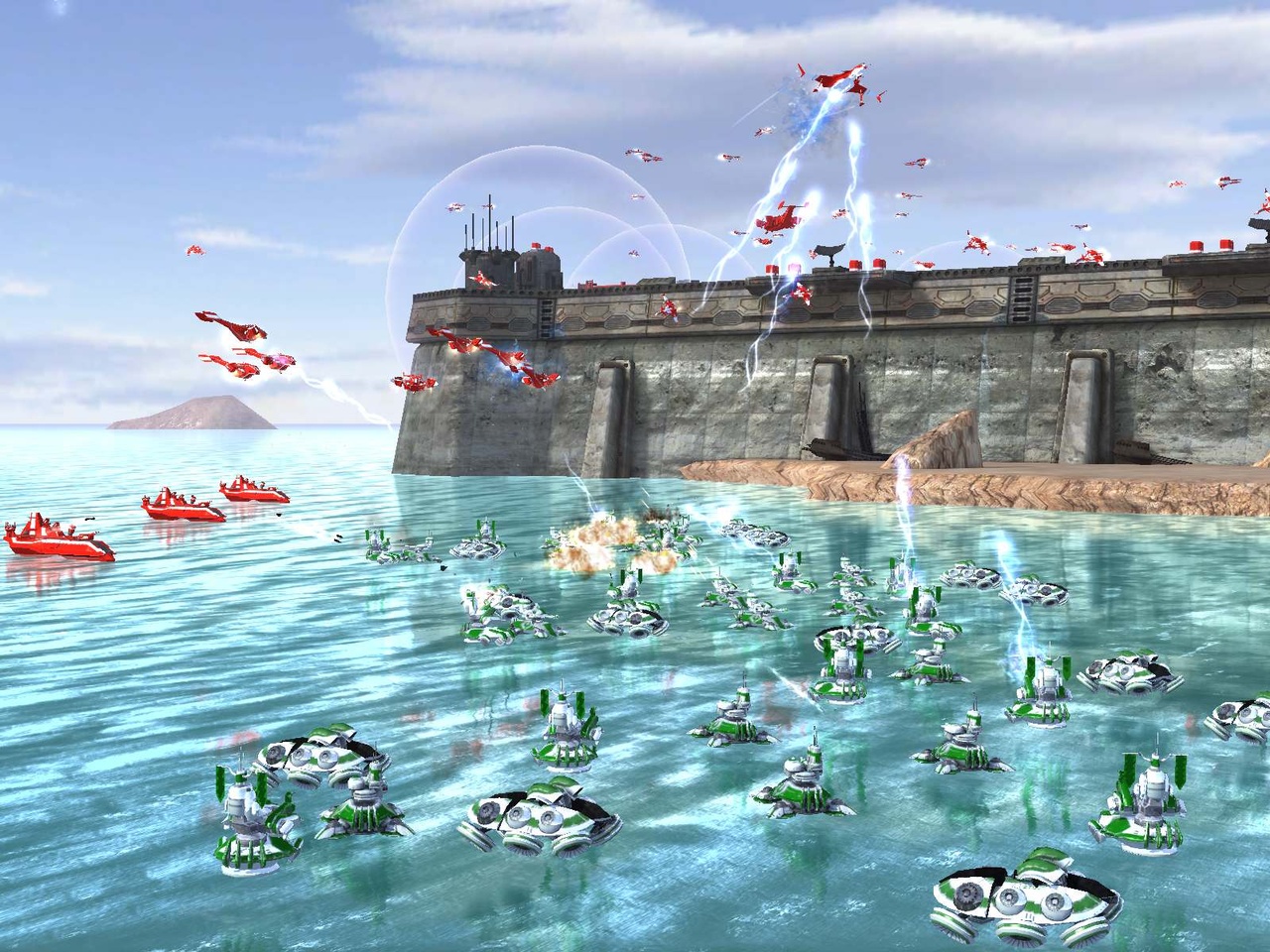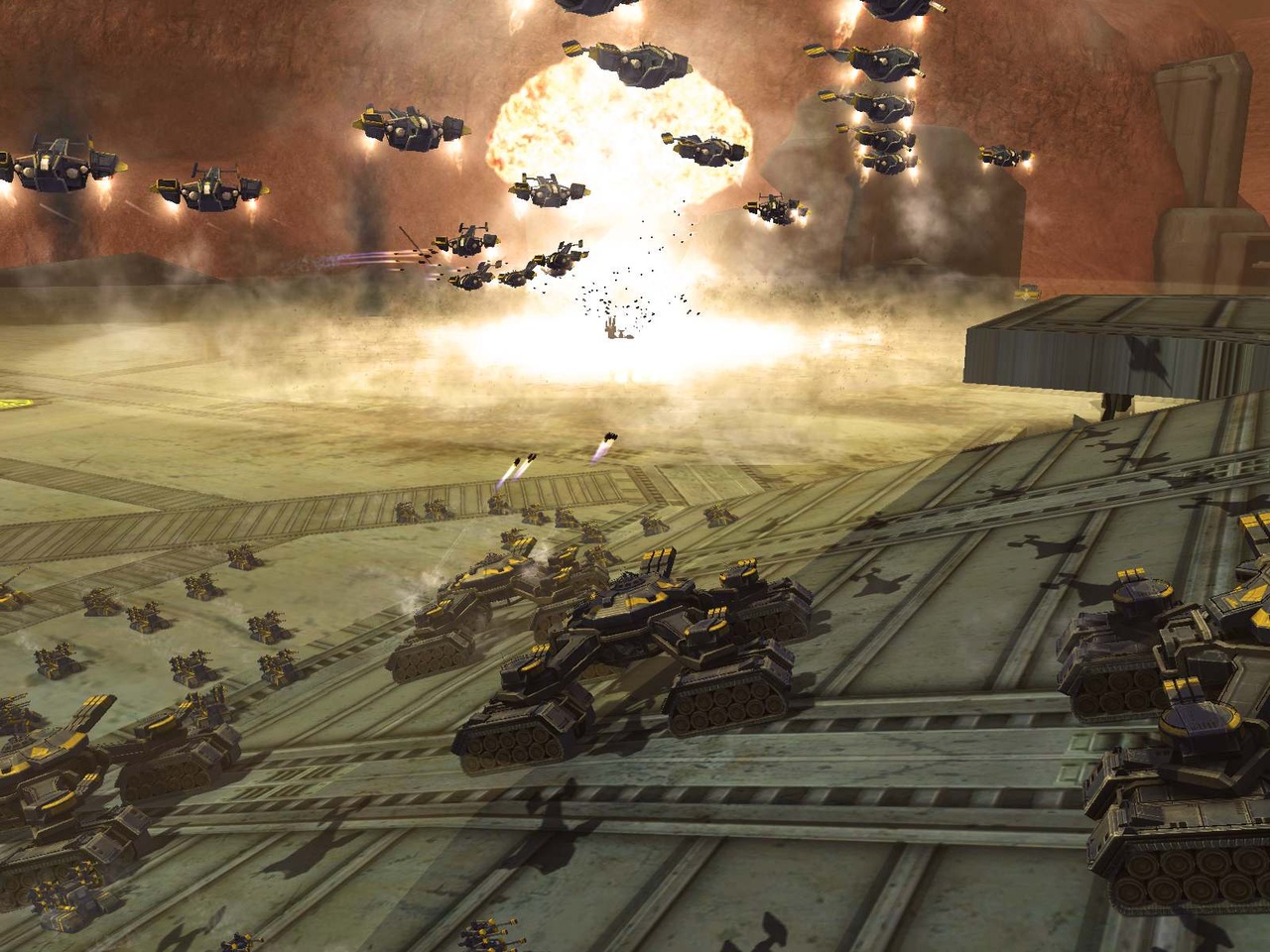Supreme Commander 2 Updated Q&A - Gameplay, Units, Technology, and More
Gas Powered Games frontman Chris Taylor updates us on the units, gameplay, and technology in this highly anticipated strategy sequel. Exclusive trailer inside.
The development studio Gas Powered Games is perhaps best known for 2007's Supreme Commander, a remarkable and gigantic real-time strategy game that offered enormous real-time strategy battles and impressive technology that let you zoom way, way, way-way-way out in real time to view the game from an abstract, strategic view or let you zoom in tight on your armies of mechanized machines as they smashed each other to bits in your name. Now, the studio is working on the sequel, which will be released in early 2010, and GPG's creative director (and the designer of the acclaimed strategy classic Total Annihilation), Chris Taylor, has some new answers and updates on the game's progress.
STAR WARS: Prequel Pack - Official Reveal Trailer DEAD OR ALIVE Xtreme Venus Vacation PRISM - Official 2nd Trailer Phantom Blade Zero - 6 Minute "Year of the Snake" Gameplay Trailer The Hundred Line -Last Defense Academy-: Character Trailer 1 GUILTY GEAR STRIVE: DUAL RULERS - Official Main Trailer Black Ops 6 & Warzone - Official Season 02 Launch Trailer Black Ops 6 - Season 02 Cinematic Trailer Pokémon TCG Pocket: Space-Time Smackdown | Coming Soon! FINAL FANTASY VII REBIRTH - PC Launch Trailer over the hill - Announcement Trailer PAYDAY 3: Don't Be a Hero Trailer Vampires: Bloodlord Rising | Dragos Gameplay Trailer
Please enter your date of birth to view this video
By clicking 'enter', you agree to GameSpot's
Terms of Use and Privacy Policy
GameSpot: Give us an update on the game's development. What aspects of the game is the team working on now?
Chris Taylor: As we head for the finish line, our focus turns mostly to a few key areas of the game. First, we are working to eliminate all remaining bugs and to make sure the game is tuned and balanced. We also do a lot of work on performance optimizations to make sure the game loads quickly and will maintain a high frame rate.
GS: We understand the sequel will add to all aspects of the previous game, in terms of story, gameplay, and technology. Could you give us an update on the technology optimization that's being worked on at present? How low of a spec does the game currently scale to?
CT: Well, the game has a brand-new rendering engine that has been designed to be extremely efficient for this kind of game. The engineering team has done an outstanding job of identifying the key graphics requirements to produce a visually stunning game that performs incredibly well. I can't say for sure these days with PCs all over the map, but if you bought a slick gaming rig five years ago, and perhaps upgraded the video once, you should have no problem at all.
GS: We understand that the sequel will not only bring back our good friends the Cybrans and the UEF, but will also debut a new faction, the Illuminate. What can you tell us about this group? How will they perform on the battlefield?
CT: The new faction is an interesting group, because they sort of grew out of the old, original faction, the Aeon Illuminate. They play a little differently than the other factions, because most of the units hover above the ground and the water. This means that the Illuminate don't have or need a navy. This decision gives the faction a lot of asymmetry, but it fits well with the overall design and really changes the way you interact with them. It was important for us that they look cool, however, and have a much more identifiable form than previous games, making them much easier to use in the heat of battle.
GS: From what we've seen, it also seems like there's an overall focus on giving battles more of a fluid, give-and-take quality. For instance, upgrades now take place along a skill-tree-like system that keeps even lower-tier units useful for longer, and there will be a way to launch units across the map to get them into the fray faster. Tell us about how these features affect the pacing of the battles. Do SupCom 2's skirmishes seem to heat up faster? Do they end faster?
STAR WARS: Prequel Pack - Official Reveal Trailer DEAD OR ALIVE Xtreme Venus Vacation PRISM - Official 2nd Trailer Phantom Blade Zero - 6 Minute "Year of the Snake" Gameplay Trailer The Hundred Line -Last Defense Academy-: Character Trailer 1 GUILTY GEAR STRIVE: DUAL RULERS - Official Main Trailer Black Ops 6 & Warzone - Official Season 02 Launch Trailer Black Ops 6 - Season 02 Cinematic Trailer Pokémon TCG Pocket: Space-Time Smackdown | Coming Soon! FINAL FANTASY VII REBIRTH - PC Launch Trailer over the hill - Announcement Trailer PAYDAY 3: Don't Be a Hero Trailer Vampires: Bloodlord Rising | Dragos Gameplay Trailer
Please enter your date of birth to view this video
By clicking 'enter', you agree to GameSpot's
Terms of Use and Privacy Policy
CT: We definitely wanted to see the game move along at a faster clip, but all the design changes in the world won't make up for how the map size affects gameplay--meaning, if you want a short game, play on a small map, a longer game, play on a huge map. Having said that, you will have the ability to deploy experimental units much more quickly--we call these "minor experimental units." These units aren't quite as outrageous as the big, major experimental units, but they are pretty awesome and can have a huge impact on the outcome of the game.
GS: Tell us about the decision to incorporate unit experience during battles. What does this add to the game?
CT: Well, as you probably know, we've done it before, and it's a pretty important part of a strategy game. Incorporating unit experience is a significant reward for players who don't sacrifice their units in battle without giving them much thought. It follows a real-life parallel--the more battle experience a unit has, the higher its survivability. We feel this is one of many things that give Supreme Commander 2 its depth.
GS: Tell us about the enhancements being made to the resource gathering and economic aspects of the game. Now that units can't be queued unless you can afford them, does this add more of a micromanagement layer to the game in practice as expert players wait for the precise moment they can afford their next tank or ship? How is the economy otherwise being designed and tweaked to encourage fast, smooth gameplay without too much rivet counting?

CT: That's a great question. When we started development, we prototyped the exact system you described, but what we discovered is that we wanted to be able to set up a "repeat queue" just like in the first game, so we added that. How this works is that the player can queue up a series of units, in any amount, in any order. Then they can press the repeat button. If there are enough resources, the units are all built again, and the appropriate resources are deducted at that time. If, for whatever reason, that can't happen, the factory is paused, and when resources are available, the player can continue construction. This captures a lot of the same benefits of the old system without the downside of many players getting the "stalled economy" syndrome we saw before.
GS: Tell us about the "stretch cursor" interface in the console version of the game. With a game as complex and huge as Supreme Commander 2, how will the interface ensure that players will be able to get around quickly and take care of everything they need to? Is the expectation that the Xbox 360 version will be paced exactly the same as the PC version?
CT: The key to the whole game is the strategic zoom, and the stretch cursor, our new addition to the mix, really makes the game very playable, whether you are zoomed in close, giving commands to a single unit, or zoomed way out, ordering around a large battle group. The stretch cursor gives a very clear visual indication of what will be selected. This is a huge improvement over a simple proximity-style cursor that highlights the closest unit. The player gets very specific visual feedback, and it allows them to make faster decisions that are more precise. The pacing on the console should be exactly the same as on the PC, but that depends on play style more than the game.
GS: Give us an update on the game's multiplayer. How is multiplayer shaping up so far? What are the significant differences between console and PC multiplayer?
CT: Multiplayer is shaping up great and is a huge part of the whole RTS experience, especially for a game like SupCom 2. We are providing a lot more variety in the map size and configuration, giving the player more choices for the kind of games they want to play, especially if they want to play a quick game on a smaller map. The biggest difference between the two is that you can play four players on the console and up to eight on the PC. Each platform has a different matchmaking backend that is tailored to the platform, which we believe really maximizes the experience. Oh, and we also support voice chat too.
GS: Finally, is there anything else you'd like to add about Supreme Commander 2?

CT: Sure. We're very proud of the game, because we are not only delivering a huge leap forward in technology; we're doing it in so many other areas of the game as well. For example, we've really seen a tremendous synergy in the collaboration between Square Enix and GPG, especially with our storytelling. We're doing so much more with characters, taking the player behind the scenes, into the lives of these people caught up in the war. In other areas, we've taken the concept of an RTS "map" and knocked it into a new dimension. We take the player on a wild ride, from fantastic futuristic cities, to playing on an alien artifact that is in geosynchronous orbit. We've pushed almost every aspect of the game, and have made it run on more hardware than ever, and have taken the visuals on the unit designs up at least a notch, maybe two. And lastly, everybody's favorite units, the experimentals, are now more outrageous than ever.
GS: Thanks, Chris. We can't wait to try it.
Got a news tip or want to contact us directly? Email news@gamespot.com
Join the conversation